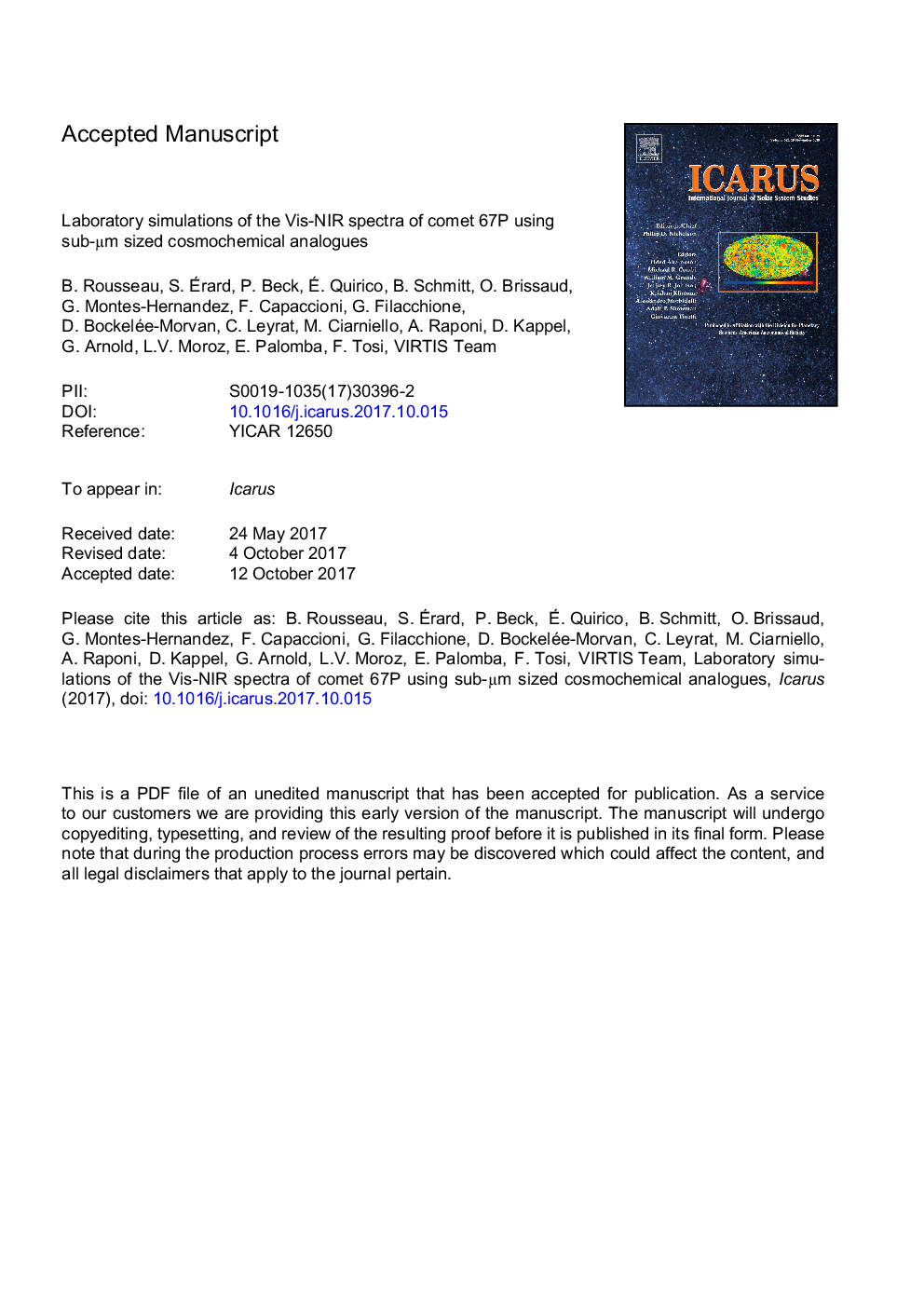| Article ID | Journal | Published Year | Pages | File Type |
|---|---|---|---|---|
| 8134330 | Icarus | 2018 | 43 Pages |
Abstract
Laboratory spectral measurements of relevant analogue materials were performed in the framework of the Rosetta mission in order to explain the surface spectral properties of comet 67P. Fine powders of coal, iron sulphides, silicates and their mixtures were prepared and their spectra measured in the Vis-IR range. These spectra are compared to a reference spectrum of 67P nucleus obtained with the VIRTIS/Rosetta instrument up to 2.7 µm, excluding the organics band centred at 3.2 µm. The species used are known to be chemical analogues for cometary materials which could be present at the surface of 67P. Grain sizes of the powders range from tens of nanometres to hundreds of micrometres. Some of the mixtures studied here actually reach the very low reflectance level observed by VIRTIS on 67P. The best match is provided by a mixture of sub-micron coal, pyrrhotite, and silicates. Grain sizes are in agreement with the sizes of the dust particles detected by the GIADA, MIDAS and COSIMA instruments on board Rosetta. The coal used in the experiment is responsible for the spectral slope in the visible and infrared ranges. Pyrrhotite, which is strongly absorbing, is responsible for the low albedo observed in the NIR. The darkest components dominate the spectra, especially within intimate mixtures. Depending on sample preparation, pyrrhotite can coat the coal and silicate aggregates. Such coating effects can affect the spectra as much as particle size. In contrast, silicates seem to play a minor role.
Related Topics
Physical Sciences and Engineering
Earth and Planetary Sciences
Space and Planetary Science
Authors
B. Rousseau, S. Ãrard, P. Beck, Ã. Quirico, B. Schmitt, O. Brissaud, G. Montes-Hernandez, F. Capaccioni, G. Filacchione, D. Bockelée-Morvan, C. Leyrat, M. Ciarniello, A. Raponi, D. Kappel, G. Arnold, L.V. Moroz, E. Palomba, F. Tosi,
